There is something ineffably cinematic about Greta Bellamacina – not only in the way she moves through the world, but in how she speaks about it: with lyricism, sensitivity, and a quiet rebellion against convention. Poet, actor, filmmaker, and muse, she inhabits the borderlands between art forms – a place where cinema becomes poetry, and movement becomes language.
In “Things and Other Things”, her second collaboration with director Riccardo Vannuccini, Greta explores a post-industrial dreamscape where meaning is fluid and words dissolve into gesture. The film unfolds like a poem – elliptical, tender, surreal – and Greta’s presence at its heart feels both ancient and startlingly modern.
In our conversation, she reflects on the alchemy of performance and vulnerability, on poetry as truth-telling, on the absurdity of capitalism and the beauty of doing nothing. Speaking with her feels like stepping into a parallel world – one where imagination remains a form of resistance, and where, as she says, “a film has nothing to hide”.
What is your very first cinema memory?
“The Wizard of Oz” – I remember wishing to have a pair of ruby red shoes that sparkled red like the ones in that film and could take me to new worlds.
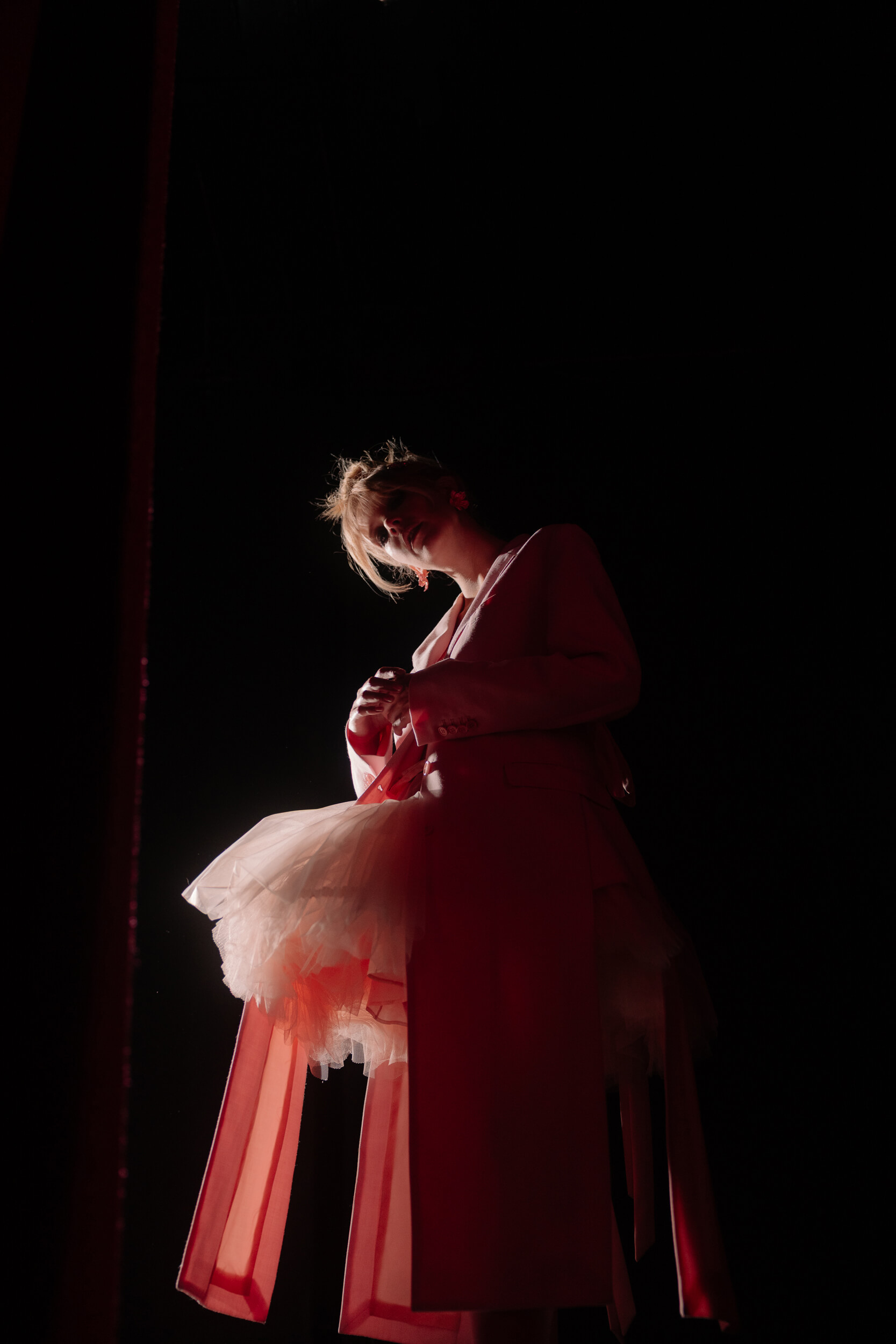
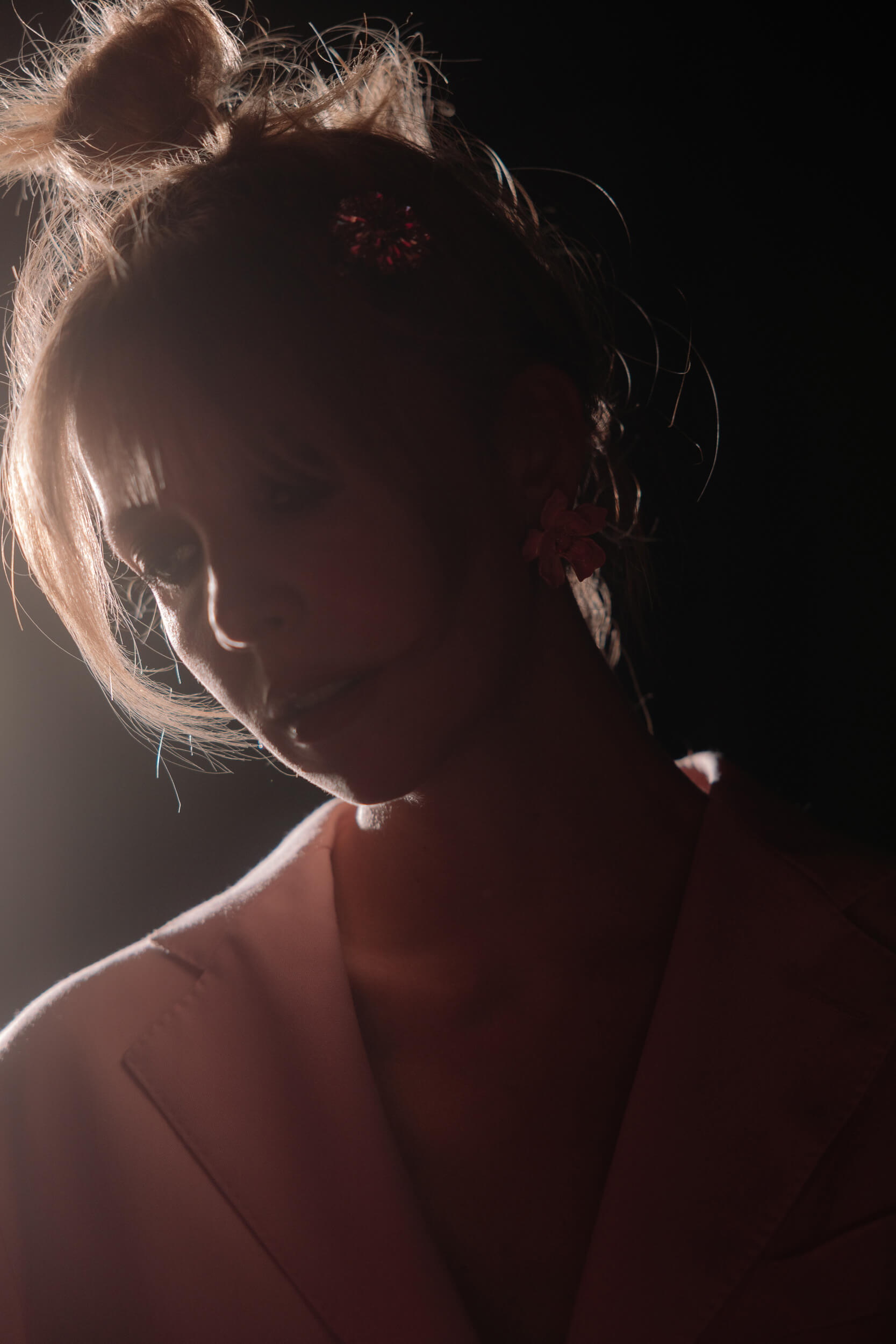
“Things and Other Things” is your second collaboration with Riccardo Vannuccini, who wrote both this film and “Commedia” with you in mind. How has your creative relationship evolved between the two projects?
I feel very lucky to have made these two films together. They are some of the works I’m most proud of. Before we started “Commedia” I was nervous. Riccardo had written to tell me the story, but then, when I read the script, it was more like stories of dreams both surreal and familiar at the same time. Sometimes following the story and sometimes escaping the story. I couldn’t imagine exactly how we would shoot it, but then when I came to understand Riccardo’s theatre work, I realised the process would be more like his theatre. A lot of the process with Riccardo is about following the feeling, rather than thinking about the overall form of the story. It is a romantic way of making cinema, one that follows no predetermined formula. I guess this is the beauty of making independent cinema. You hope that you are making something unique but also something that brings you closer to real life, rather than just cinema for entertainment’s sake. If you don’t believe the feeling, then all the truth fades away. So much of acting is about believing. With this film I knew that the form would come later, it was about staying as connected to the truth of the character as possible and allowing real spontaneity to happen to the character.

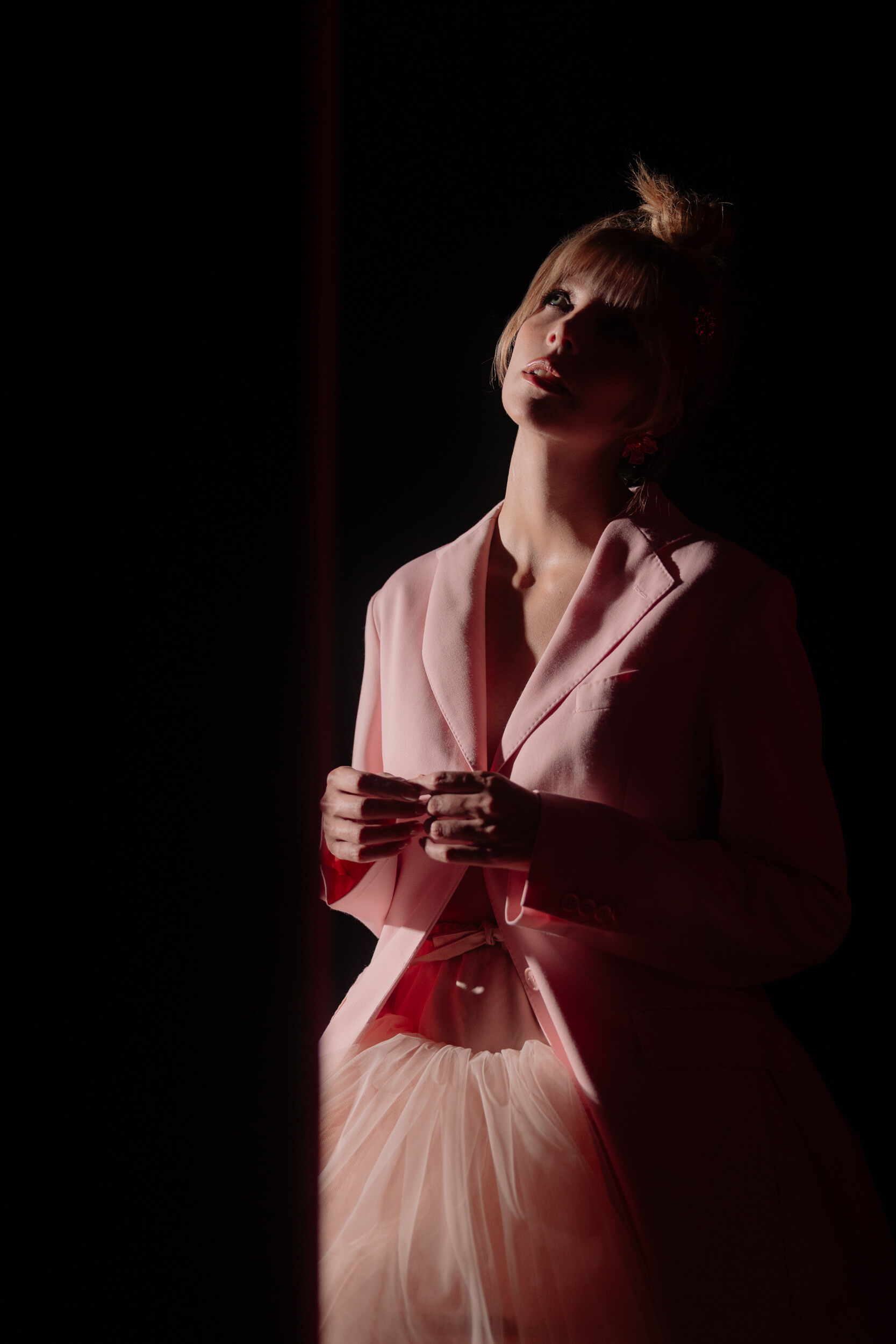
Before filming, you joined Riccardo’s theatre troupe in Rome, performing with his company at the Ara Pacis. How did that immersion into his theatrical world shape the way you approached your role in “Things and Other Things”?
I performed in one of Riccardo’s “Peace” plays with his theatre company in Rome at the Ara Pacis. The performance started at midnight and lasted an hour. A dream of peace performed whilst everyone was dreaming.
His theatre company is special, nothing like I have worked with before, they tell stories of love and war. The company is made up of his core group of actors with a moving chorus of additional actors who come from the “therapy theatre” projects Riccardo does. ArteStudio, has a twenty-year history of “therapy theatre” – working in prisons, mental hospitals and refugee camps across Italy with incarcerated and displaced people, and the people they work with in those situations often join productions and become part of the company. This core idea of reaching out to people who are living in difficult situations, and of theatre as healing, is at the soul of what ArteStudio do.
We rehearsed the play in a dance studio and a lot of it was figuring out the timings. His stage sets are simple, often a row of chairs that gets moved around, a lost teddy bear, bits of old rubbish, old shoes, and clothes. But each tell a story, a shipwreck, and there is always something happening. A character picking up the shoes, another person tearing up a piece of paper, someone else muttering in a different language. There is a disarray of madness and order to them. In moments everyone comes together, but the coming together is more of a frantic cry, than a uniform of harmony. I wrote a poem for the play called “Meltdown” inspired by the recent war that had just broken out in Ukraine. I performed it in English and Riccardo spoke it in Italian. This play and the previous film “Commedia” that was also made in Rome first, gave me the security to let go, and really understand the moment when filming, this is a kind of gift to a performer.

“A dream of peace performed whilst everyone was dreaming.”

Riccardo comes from a strong tradition of movement theatre, rooted in voice and body rather than narrative. What was it like for you as a screen actor to adapt to that kind of physical, poetic language?
Yes, Riccardo is very interesting – he is predominantly a theatre director working with movement theatre in a similar vein to Pina Bausch but with voice and text. Dance becomes its own language in the films. With the smallest of movement, the body seems to be able to bring to life the unsaid. It can be as simple as walking in union, or both characters waving in concert just at the moment you think they might have given up, they see life. I like the idea that dance can replace a binary world, sometimes words are too finite. Movement can be a way to let go and blur new ideas together, and to express relationships beyond language.
In “Things and Other Things” my character, Irene, and Riccardo’s character, Rocco, find themselves in a post-industrial world, an abandoned world, where almost nothing happens. They are left with their imagination and dreams. Left to play like children. Neither of them speak the same language. It’s a Waiting for Godot-esque story of waiting for something to happen, and along the way they meet displaced people and objects that suggest everyone is now, for some reason we don’t know, displaced from their homes. They find themselves walking through camps with other characters who don’t speak the same language. In a way language isn’t enough to tell the story. The movement is a way of finding a new language. So symbolic movement is used, and it illustrates non-linguistic relationships.
Riccardo has said that the film doesn’t have the logical narrative of a novel, but instead the “symbolic narrative” of a poem.


The film has been described as “about nothing happened, meaning anything can happen.” How did you personally interpret that idea when stepping into your character? Does it apply to real life in your view?
Dreaming is a big part of this film. My character lives on her imagination. The final script is very much in Riccardo’s head, when we are filming, he practically doesn’t go to sleep after we leave the set. He is perpetually sketching ideas into a notebook, right up until the moment the camera starts to roll. A lot of the prep for me as an actor is before we start. I learn all the lines, ask a lot of questions and read all the referenced literature. Then on the day it’s about being as open and free to the scene idea as I possibly can, allowing the moment to enter into the space. Forgetting everything and letting the unexpected happen.
For instance, a lot of the literary references in “Things and Other Things” are a way to show the two characters playing, like children. Left with no belongings, just the works of literature that seem to haunt their souls and live in their skin. That’s all they have in the end. For instance, there is a scene where Irene recites the iconic Romeo and Juliette scene “Will thou be gone, it is not yet near day” to Rocco, but instead of being in a bed, I am up a ladder saying the words through the arms and body of a teddy bear, like a puppet show. And Rocco who is also up another ladder is listening to the words, holding out a bear, pretending it is Romeo. It was very fun to learn lines from great works and retell them in a very unserious way. I have come to really love this way of working. On a strange meta level, it helps with the performance, because this character is reacting in real time, I know her private story, but her reality is her wanderings through an apocalyptic world.
Staying in the moment keeps a sense of realism and unexpectedness to the rest of the film.

Riccardo has said the film is structured like a poem rather than a novel. What does it mean to you, as an actor and a poet yourself, to perform inside a film that breathes like poetry?
It is a gift. I want to tell the truth in my work. I don’t want to create a world that has a formula. It is cruel to make people think there is a formula to life. So much is out of our control. We are all trying to understand together. So, to make a film that has a broken and undefined structure feels like a gift.
I think “Things and Other Things” is distinctly European in its multilingual cast, where each actor speaks in their own language. What kind of energy or realism do you think this brought to the film?
Riccardo didn’t always give us the crutch of language – the film is distinctly European in that all the actors speak in their own languages – Italian, English, French, German and Arabic. So, often an actor does not understand what the next actor is saying with words, and that’s where the poetry of movement comes in. It’s deeply interesting and very poetic, and I think Riccardo is doing something unique in bringing his language of physical theatre into cinema. I don’t know any other director who is working quite like this. I think because of this, his films feel some much closer to real life. In keeping the different languages, I think the story is able to take on a deeper level of lived experience. Perhaps we are all displaced? Perhaps we are all much closer to one another than we think? It is a powerful message because, beyond language we all live in our bodies, in our heads, in our hearts. In this film the multitude of languages is not a hinderance it is a coming together. Something I have never seen happen before in cinema.
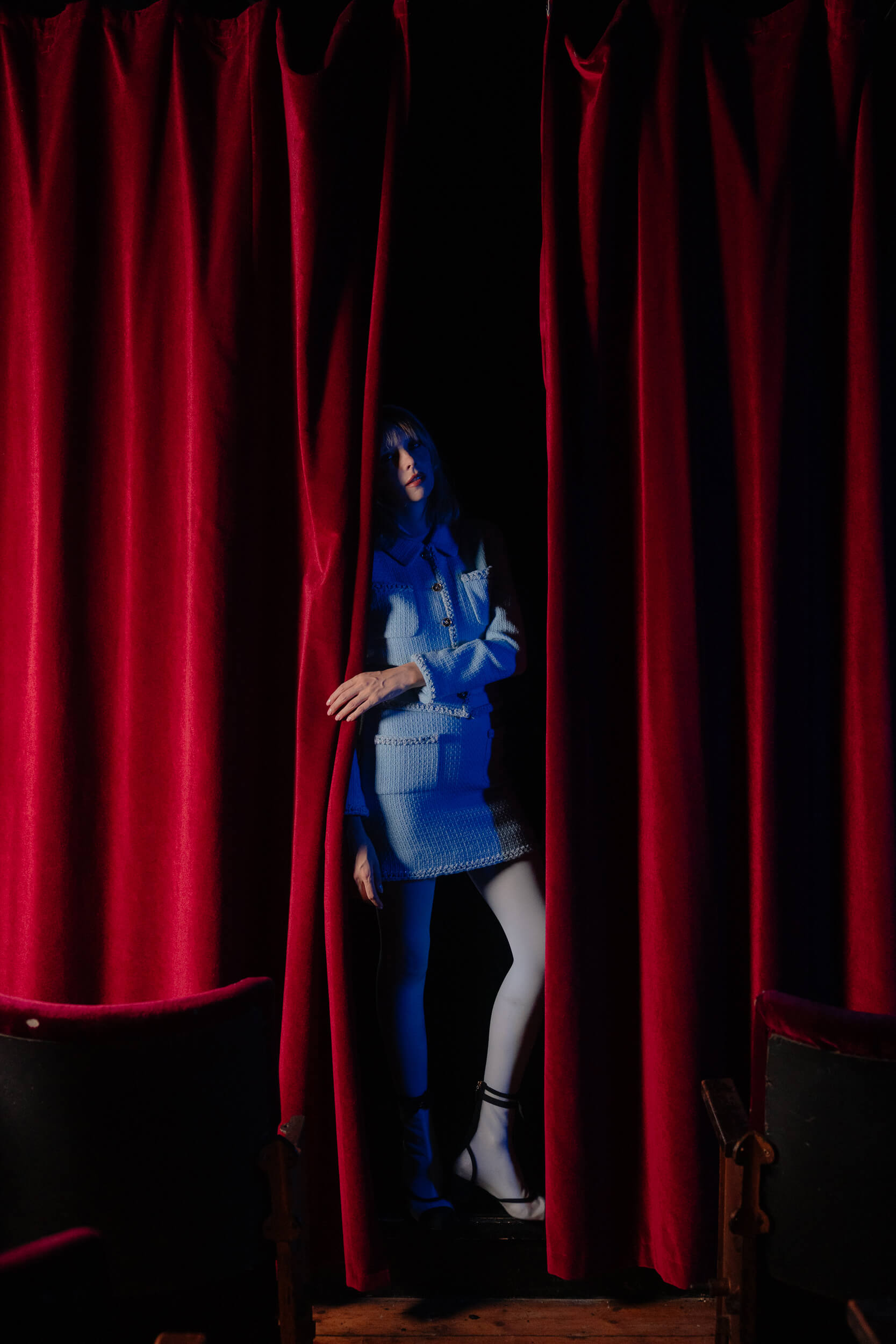
“The film is distinctly European in that all the actors speak in their own languages – Italian, English, French, German and Arabic. So, often an actor does not understand what the next actor is saying with words, and that’s where the poetry of movement comes in.”

There’s a strong sense of childlike wonder between your character and Riccardo’s. Was that something you two worked on consciously, or did it emerge naturally from his method?
We filmed in Tuscany in the winter. The Tuscan countryside is very melancholic in the winter and the light always seems to be yellow. There is a nostalgic glow to the place, even in the dead of winter. There is something very ancient about the landscape, there is something very still to the time and space of the place. You can definitely feel it more in the winter. Riccardo and I discussed this together, we discussed the way the landscape seemed unchanged and untouched by the modern world. How the winter is a reminder of that, with just the farm animals and the empty fields. Especially when all the crops go to sleep, it seemed to echo a Terrence Malick landscape, so one film reference was “Badlands” and then another was our own first film “Commedia”, which is set in the landscape around Rome and Ostia in winter.
Riccardo said he wanted to make a film about doing nothing, the opposite to this fast world of today. To do nothing, in a place that is asleep, seemed like an important idea. We filmed one of the scenes in an old, abandoned house on a pig slaughter farm, between the shots, there was a haunting sound of the pigs crying in the distance. Perhaps a distant reminder of this world we have come to live in. The animals never lie. In terms of me and Riccardo, we wanted Irene and Rocco’s relationship to be somewhat innocent and childish. Like if Bonnie and Clyde were children.
Pier Paolo Piccioli’s bespoke design for your character turned out to be his final creation for Valentino. What was it like to embody a role while wearing such a symbolic piece of fashion history?
Pier Paolo’s clothes are made for cinema, because they transcend time, they make you believe that beauty can exist all around, even in a broken time. We first collaborated in 2019, when he wove my poetry into his AW collection for Valentino. The dress he made for my character in the film had a certain dream-like quality to it. We filmed “Things & Other Things” in entirely abandoned locations in Tuscany, an old, abandoned theme park, an old hospital, an old school…in the dead of winter. In a way the costumes create visual contrast to these settings, a dream-like quality. Because the atmosphere is so melancholic, the dress takes on a different meaning. It allows you to look at objects and costumes outside their context, like children often do when they play dress-up. For instance, there is a scene where I find the beautiful blue dress, I don’t know what it is. The next time you see me I am wearing it on a bed in a field made from broken rubbish. Rocco is billowing the six-metre train and at first glance it looks to be the sea, then on close look it could be the sails of a boat then you realise it is a beautiful dress, which is out of place.
I think there is something very beautiful about having costumes that give real visual contrast to the world.
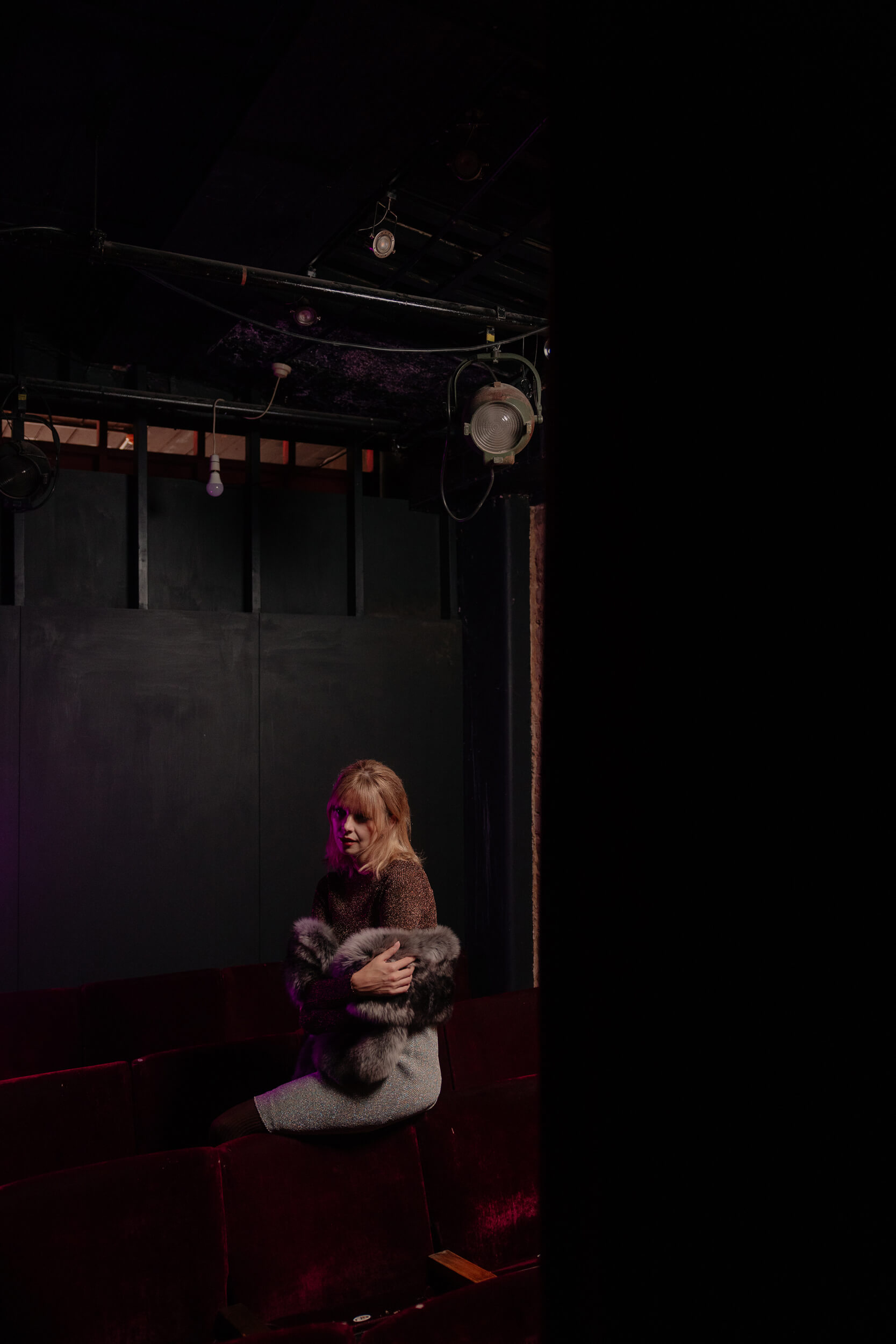
“In a way the costumes create visual contrast to these settings, a dream-like quality.”
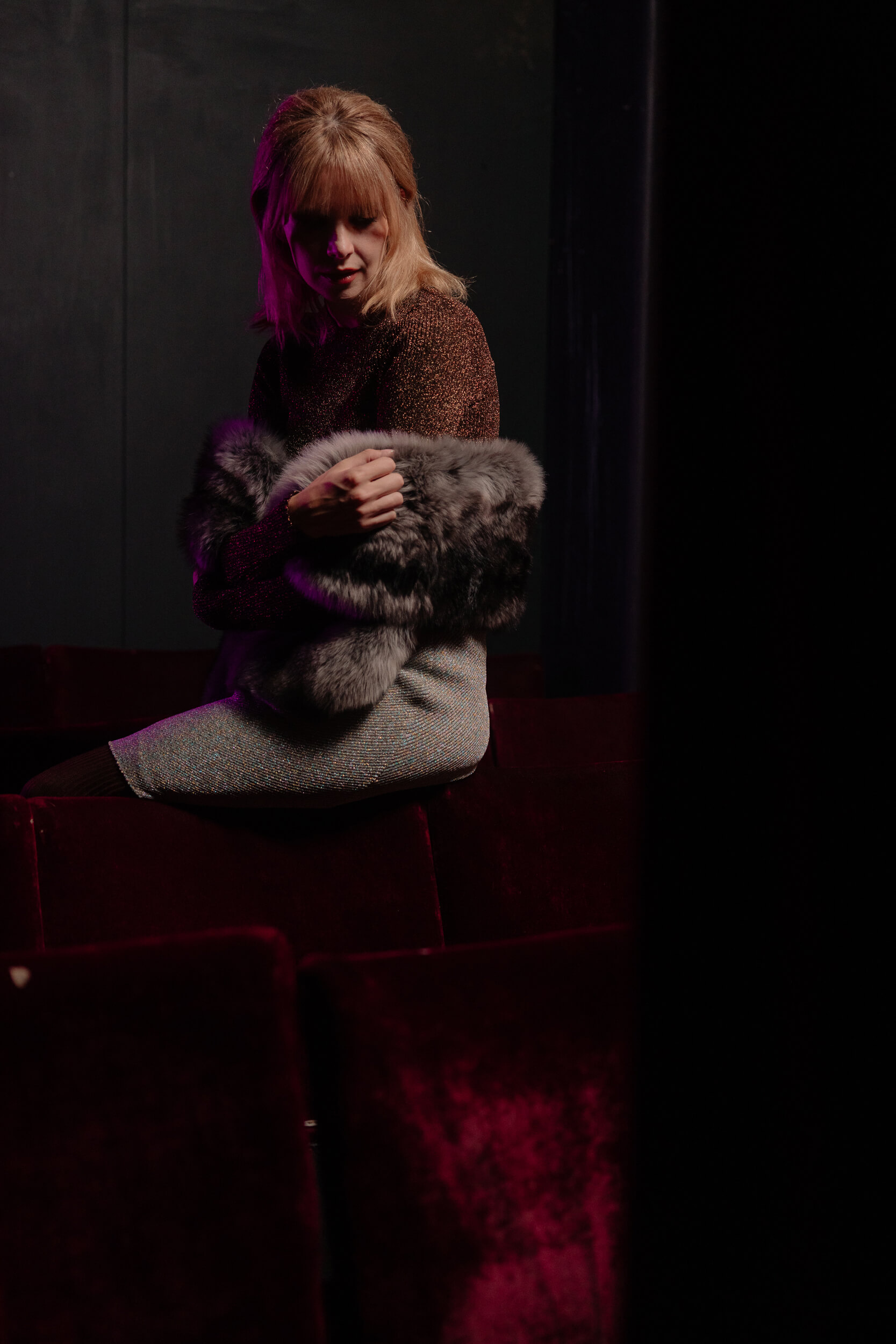
As a model yourself, what role does fashion play in your life, currently?
I see clothing as a personal mirror to the world. A protection but also a welcoming and a feeling. Modelling feels like dreaming, in front of the camera I want to show a stream of consciousness that perhaps someone outside can follow. It fun to think of clothes as a tool for telling a story.
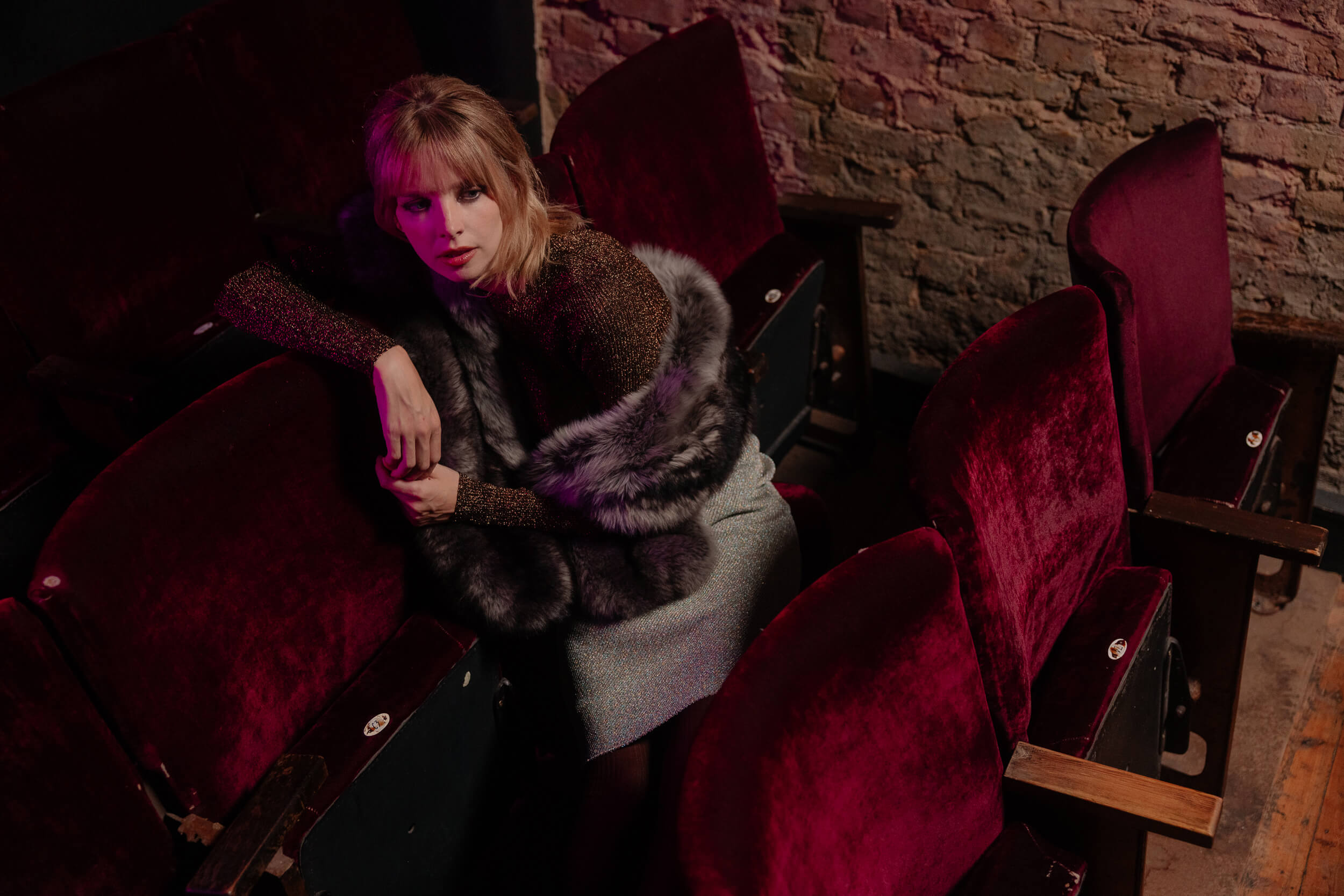
As a poet, instead, what’s a poem or a line of a poem that you feel like it represents this very moment of your life?
At the moment, it’s more these song lyrics than a poem, it’s the lines:
And I follow, follow, follow
The gypsy faerie queen
We exist, exist, exist
In the twilight in-between
It is a song called “Gypsy Faerie Queen”, written by Nick Cave and Marianne Faithful. It’s come into our lives like a mantra for the last year… Look for the magic and follow, follow, follow…


What are you reading right now?
I am currently reading the surreal, hybrid collection of essays by Danielle Dutton called “Prairie, Dresses, Art, Other”. I also just discovered Sebastian Barker’s poetry, I love the poem “The Uncut Stone”. There is a chorus line that runs through it which says,“I am the voice of ancient things, I am the audience nobody sings”. Sebastian was the son of Elizabeth Smart. My husband Robert Montgomery recently made a painting of Elizabeth Smart and her children for an exhibition at Charleston, and in that process we discovered Sebastian’s poetry.
What’s the latest film or TV show you’ve watched that particularly impressed you?
“Parthenope” by Sorrentino, I thought it was brilliant.

Do you have any rituals or habits that help you get into a creative mode?
Music usually helps me find a place to start. It sort of blurs out the outside world and the domestic world at the same time. Research is also a great way into creativity, for instance if it’s a script I am working on, I like to research as much as possible around it. There is always something that touches me afterwards and lingers on.
In what way do you feel most vulnerable, and how do you transform that vulnerability into strength?
I am quite shy, so it often takes a lot for me to perform. But I’ve learnt that acting is about translating an internal world visually, processing it inside first, the dialogue is irrelevant mostly, everything important is happening inside the characters head. It’s that quiet conversation we are having inside ourselves, and that is also where I hope to go to when I write. That bit of self where feelings and revelations come and go. Life passes by in a multitude of images. Memories are re-lived and rediscovered. I don’t know why some images come back more often than others, but this world is the world of the incomplete and complicated. I think it’s this complex stream of thought that connects us all together. No one’s life is straightforward, we move closer together in the pain and the discovery and the incompleteness. This process I find comforting, and it brings me the confidence to keep exploring.
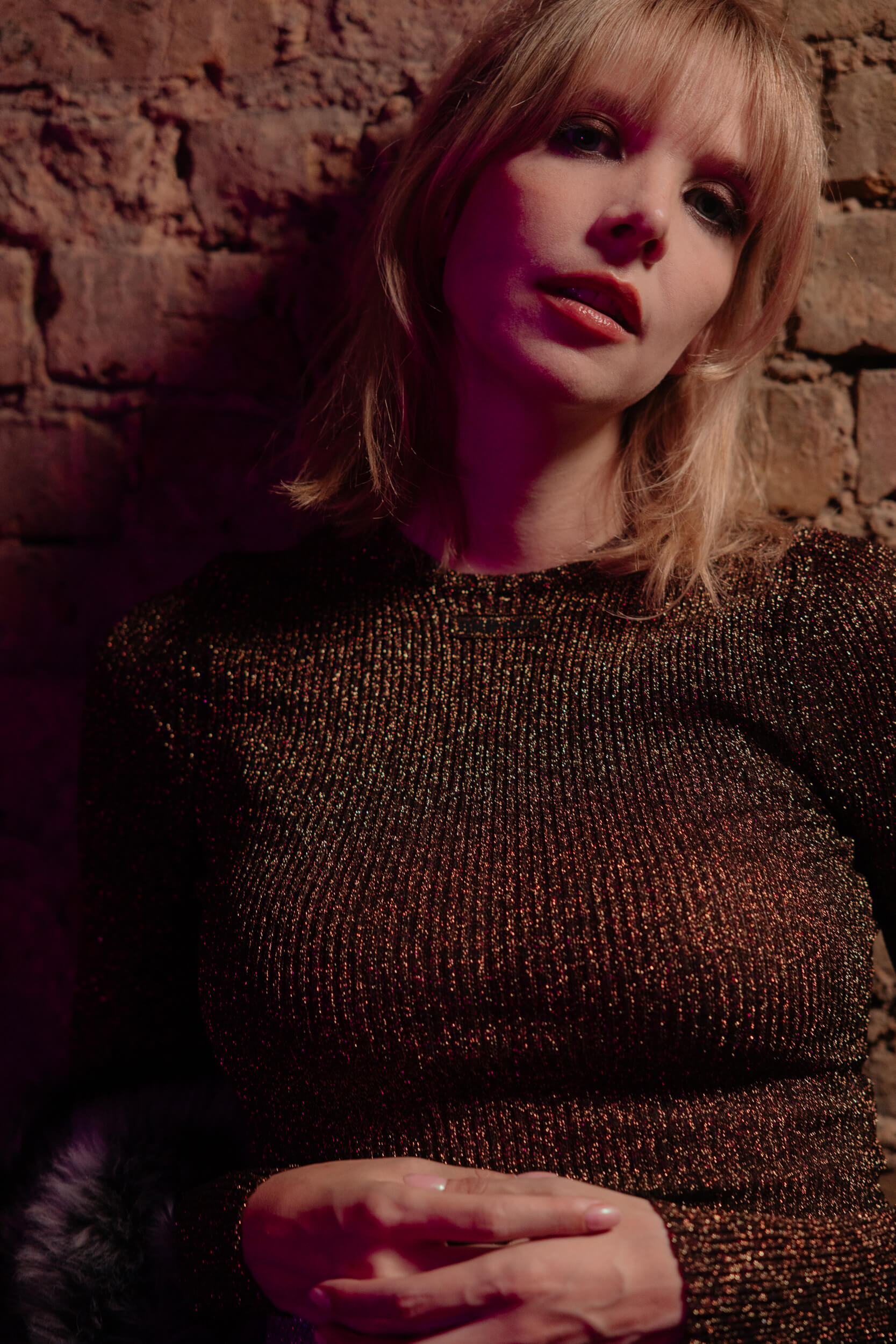
“No one’s life is straightforward, we move closer together in the pain and the discovery and the incompleteness.”
What makes you feel safe, and what makes you feel confident?
Looking back at history, so many of the answers are already there.
Acting, as well as writing, in my view, often confronts you with unexplored aspects of being human and, consequently, helps you understand yourself better. What is the last thing you discovered about yourself through your work?
Rediscovering humour. Humour is a great way to ask and confront important questions without being to be too moralistic. In “Things & Other Things”, I think Riccardo is pointing out that capitalism as a system is actually pretty absurd, no more logical than anything else, and I hope his characters express our mutual disorientation in this moment of wealth inequality and climate catastrophe. The film asks a lot of questions that are social and political, but it keeps its sense of humour. Unlike theatre – which is a hybrid of dramatic devices that puzzle together to tell a story, but where we are still aware that we are in the theatre watching actors perform – cinema often tries to be deceptive, in that cinema pretends it’s real. It’s rare to be break the fourth wall in cinema and reveal to the audience that you are watching actors. This is something Riccardo is very clever in doing, with a great sense of humour. Just when you start to believe these characters, he subverts the film’s apparent truth. He tells the audience that this is cinema, and these are actors in costumes. There is a surrealist approach to it, he keeps you questioning your position.
There is a scene at the end of the film, which I love. You see Irene and Rocco in a car, at first you think they are driving away in torrential rain, like at the end of an American road movie. But then the camera pulls out, and you see a character from an earlier scene is holding a watering can above a stationary car, it’s just a car wash, and the car is going nowhere at all. The scene goes from serious to comedy and reminds you again that this is a film and it is not real at all, as in Thomas Ostermeier’s productions of Chekhov, this breaking of the fourth wall, hopefully makes you question yourself as the audience and your own position in the world.
The film has nothing to hide, what about you?
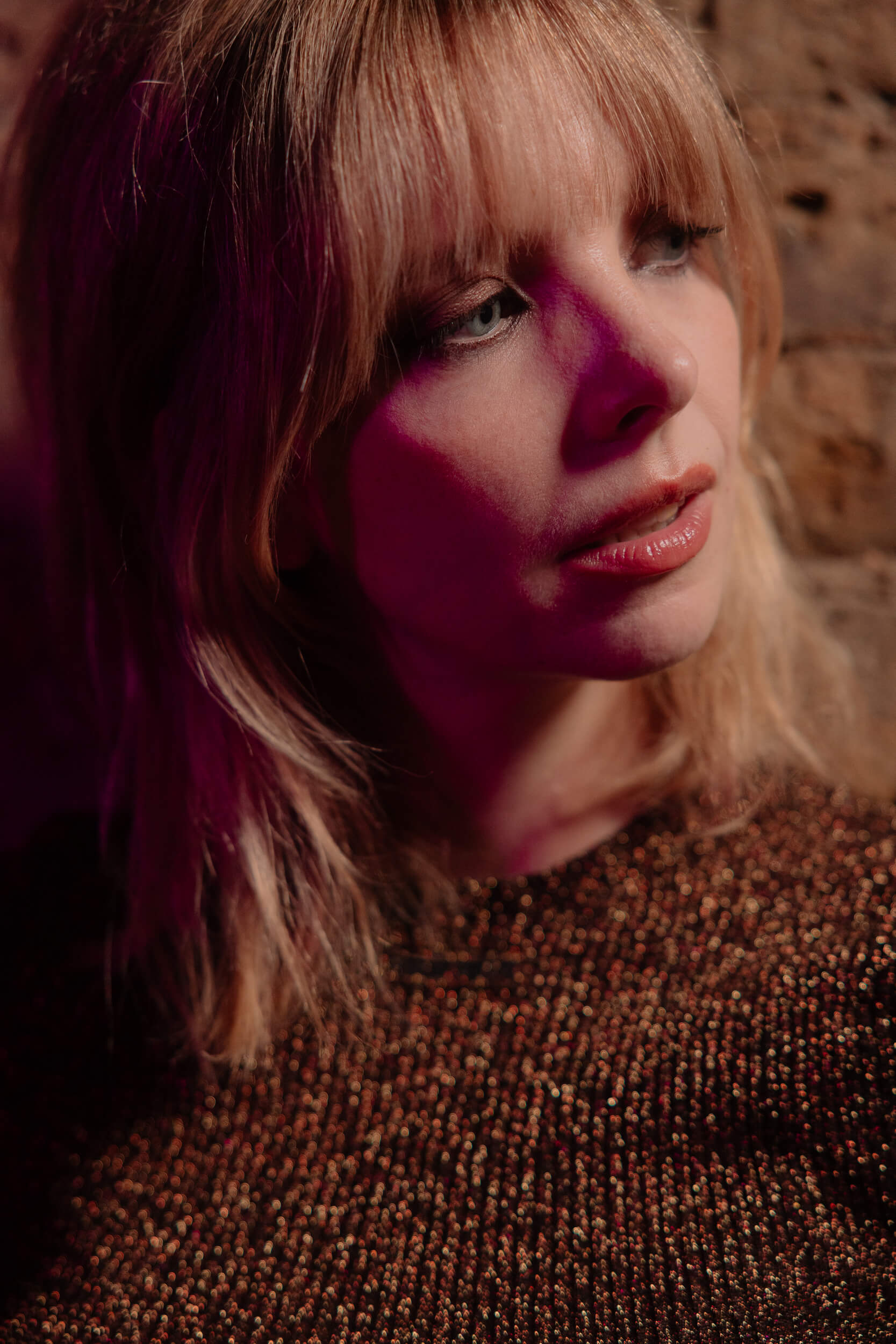
What would you like to see outside the window, now and forever?
A revolving picture of my children and husband Robert on the road together.
Are you a night owl or an early bird? What is your favourite time of day?
I like the morning for writing and the night for ideas and playing.
If you had to describe yourself with three images – one from your childhood, one from the present, and one from the future – what would they be?
- Learning to play the violin in an old attic room at school.
- Watering the geraniums.
- Looking into a new bright blue sky.
The last person or event that made you smile?
Ersilia, my daughter, with her electric smile.
Your greatest act of rebellion?
Staying curious.
And your greatest act of courage?
Keeping an open heart and believing in the possibilities of goodness.
What is, instead, your greatest fear?
Time. It has always been my permanent battle, my permanent resistance. As a child, I knew of its importance. The surreal-ness of time and its lack of form. I think that’s why I like to take pictures on 35mm film. I am always amazed by the sense of detachment an image has, especially photographs on film, and I think this is a good metaphor for the way I write. It’s a broken collection of memories that hold something meaningful to me, that live in the present but come from a different time. I don’t quite know why some images are more powerful than other ones. But they interrupt the present inside of me. It’s like they want to find their way out. Memories are like hauntings in a way.
What does feeling comfortable in your own skin mean to you?
I am a perfectionist, but in recent years I have learnt to give myself a break, to find joy in the unexpected moments. To laugh as much as possible. As I get older, I am learning to let things pass quicker and to live in the present as much as possible. I like to think, we only really have a day!
What is your happy place?
In the arms of Robert Montgomery.

Photos & Video by Johnny Carrano.
Styling by Rachel Bakewell.
Assistant styling Millar Wyatt.
Hair by Raphael Salley.
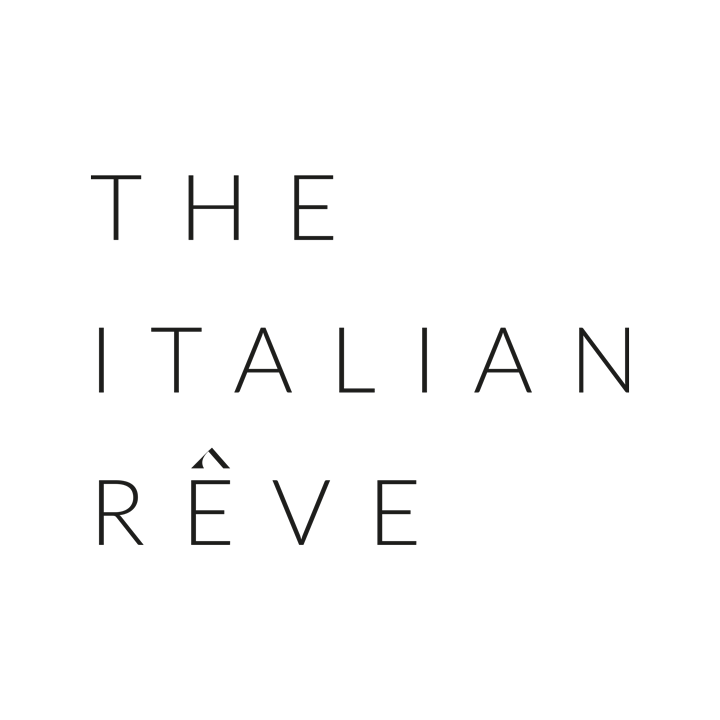
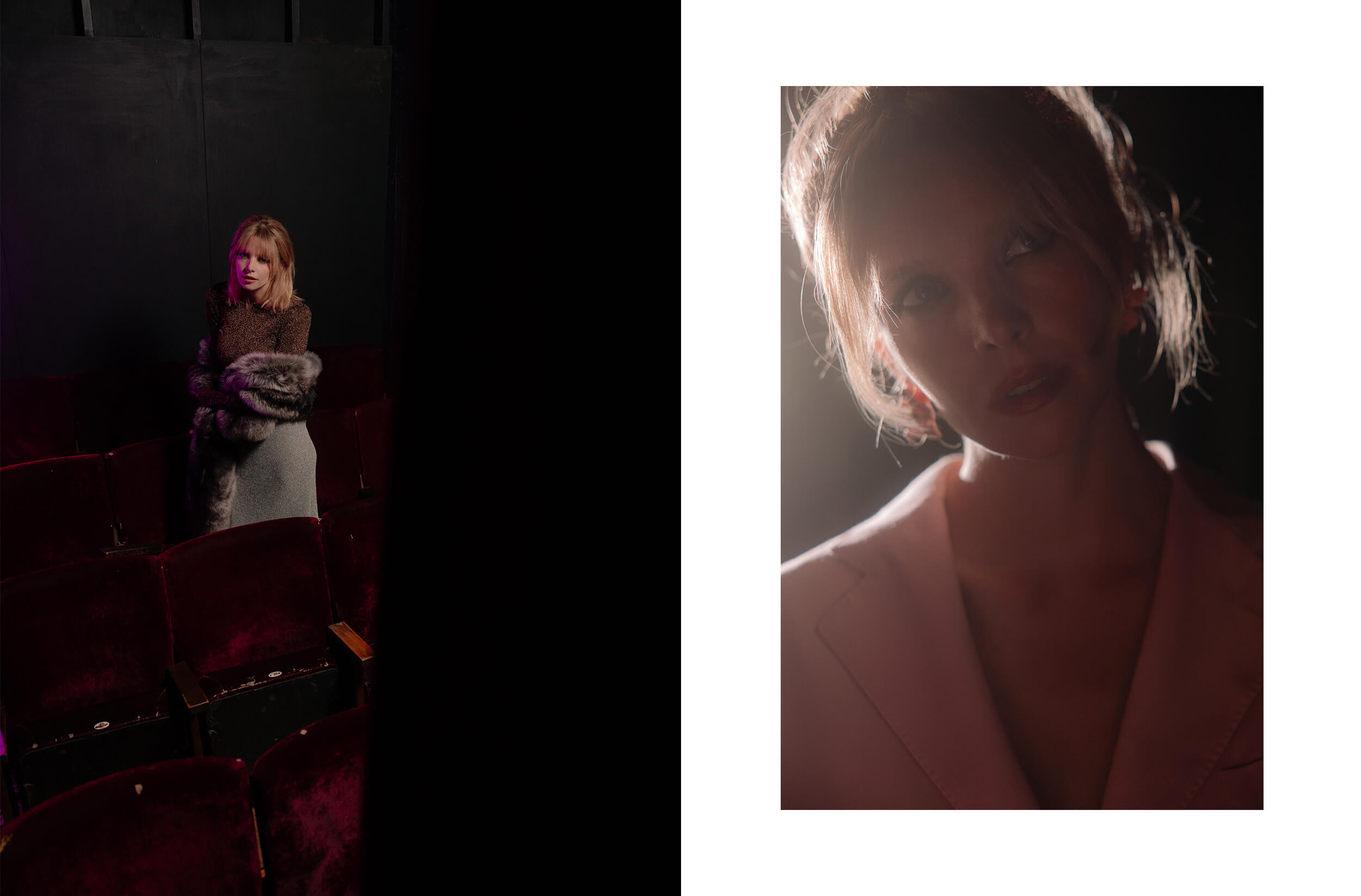

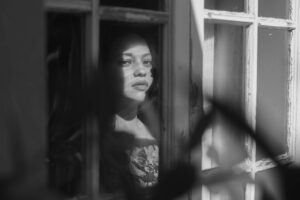
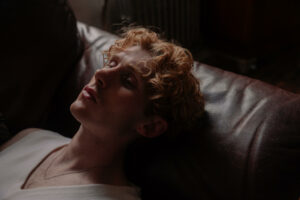
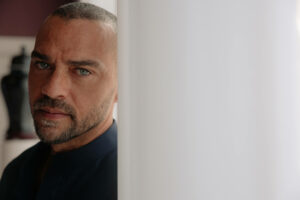
What do you think?